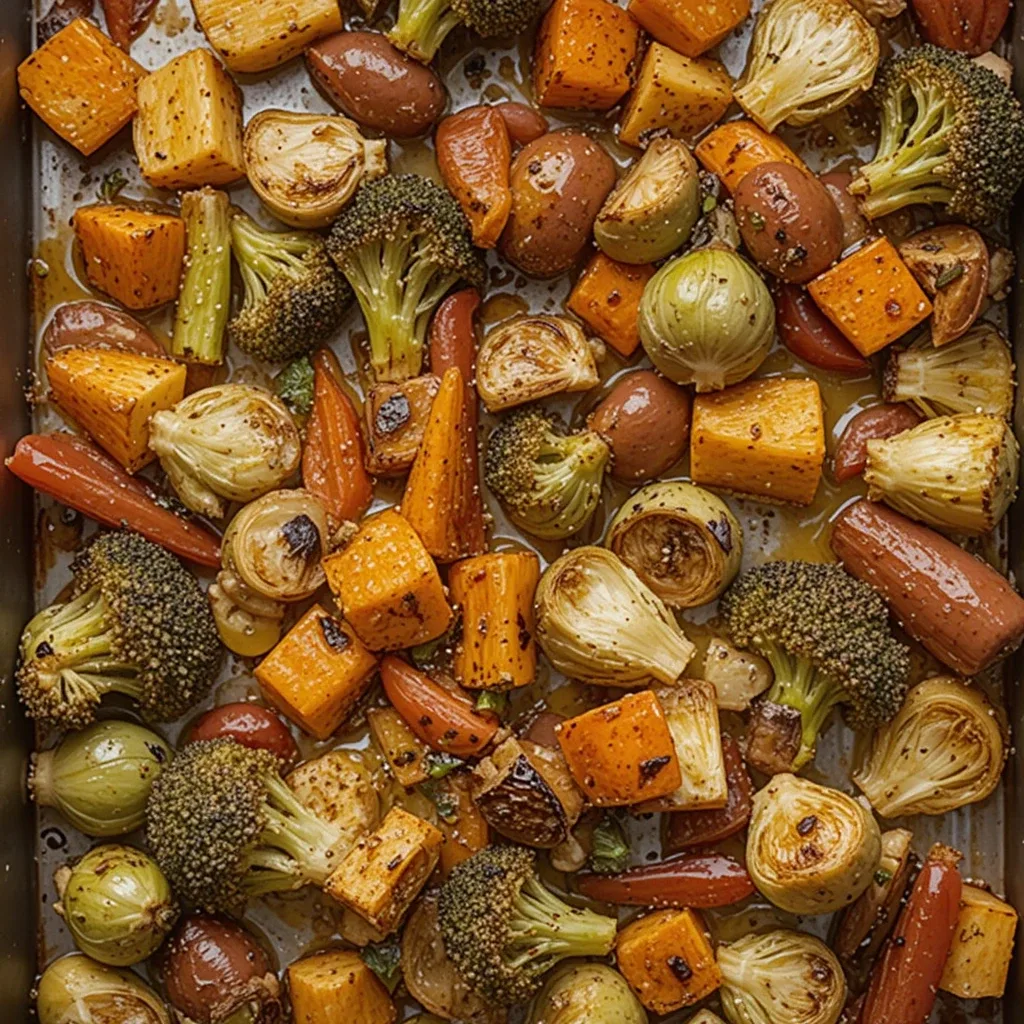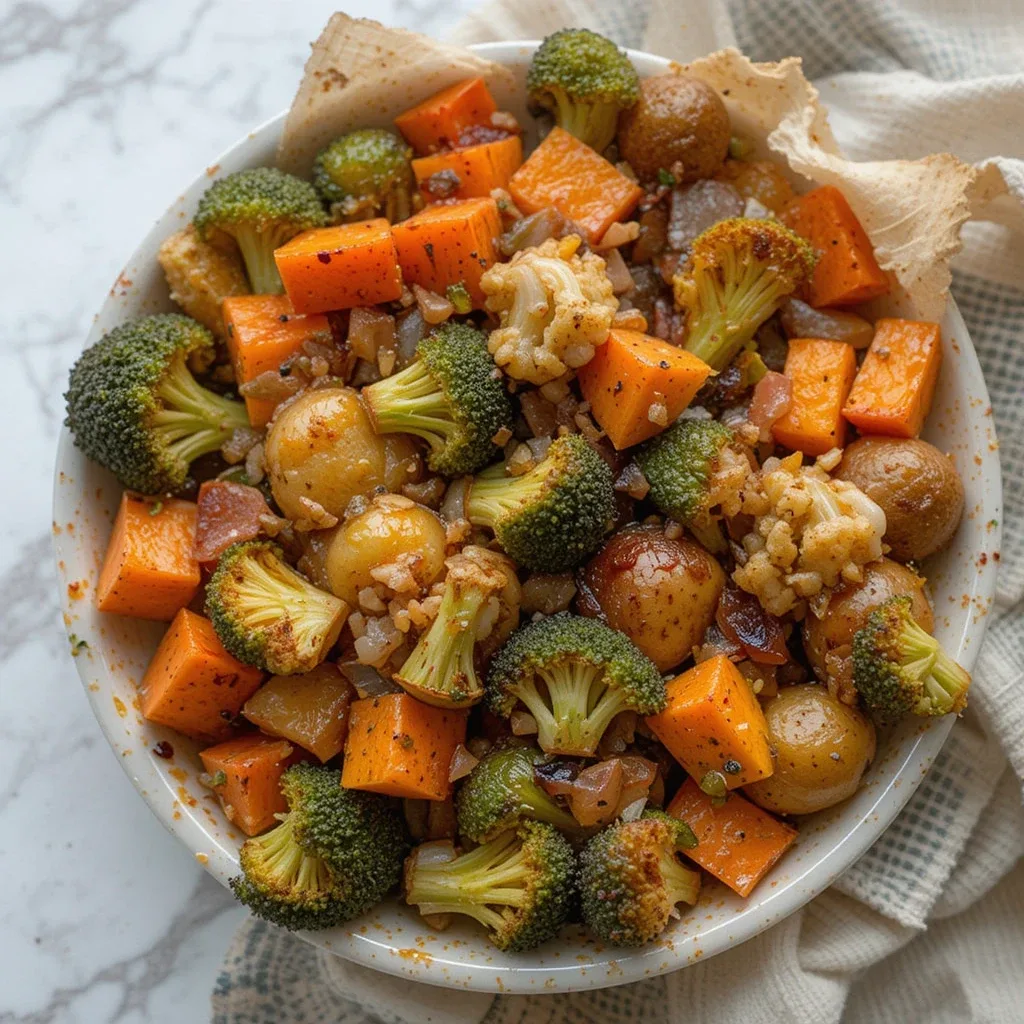Table of Contents
- Introduction
- Health Benefits of Roasted Vegetables
- Selecting the Right Vegetables
- Preparation Techniques
- Seasoning and Flavor Enhancements
- Roasting Methods and Temperatures
- Serving Suggestions
- Common Mistakes to Avoid
- Frequently Asked Questions
- Conclusion

Introduction
Roasting vegetables is a simple yet powerful culinary technique that enhances their natural sweetness and deepens their flavor profile. By cooking vegetables at high heat, you achieve a crispy exterior and tender interior, all while preserving their nutritional value. This guide will explore the benefits of roasted vegetables, the best techniques for roasting, and how to elevate your meals with this easy and healthy method.
Health Benefits of Roasted Vegetables
Incorporating roasted vegetables into your diet offers a variety of health benefits:
- Nutrient Retention: Roasting helps preserve the essential nutrients in vegetables, such as vitamins, minerals, and antioxidants.
- Digestibility: The high heat breaks down tough fibers, making the vegetables easier to digest.
- Low in Fat: Roasting requires minimal oil, making it a low-fat cooking option compared to frying.
- Increased Antioxidant Activity: Roasting can boost the antioxidant content in vegetables like carrots, bell peppers, and tomatoes.
Overall, roasted vegetables are a perfect addition to any healthy diet, offering a tasty and nutrient-dense alternative to other cooking methods.
Selecting the Right Vegetables
Roasting works beautifully with a wide variety of vegetables, but some are particularly well-suited to this method. Here’s a breakdown of the best vegetables to roast:
- Root Vegetables: Carrots, potatoes, sweet potatoes, and beets become tender and caramelized when roasted.
- Cruciferous Vegetables: Broccoli, Brussels sprouts, and cauliflower become crispy and flavorful, developing a slightly nutty flavor.
- Squash Varieties: Butternut squash and acorn squash develop a sweet, creamy texture when roasted.
- Alliums: Onions, garlic, and shallots mellow out when roasted, adding savory depth to dishes.
When selecting vegetables, it’s essential to choose fresh produce and aim for uniform sizes to ensure even cooking. Mixing different vegetables can also create a colorful and flavorful medley.
Preparation Techniques
Proper preparation ensures that your roasted vegetables come out perfectly every time. Here are some key steps:
- Washing and Drying: Always wash your vegetables thoroughly to remove dirt or pesticides. Dry them with a towel to avoid steaming during roasting.
- Cutting: For even cooking, cut your vegetables into uniform pieces. Aim for sizes that will roast at the same rate.
- Oil Coating: Toss the vegetables in a moderate amount of oil to help with caramelization and prevent sticking. Olive oil is a popular choice for its flavor and health benefits.
- Seasoning: While some may prefer a simple salt-and-pepper combo, don’t be afraid to experiment with herbs and spices.
Seasoning and Flavor Enhancements
Seasoning is where you can get creative! Here are some great options for elevating the flavor of your roasted vegetables:
- Basic Seasoning: Salt and pepper are the foundational seasonings that bring out the natural flavors of vegetables.
- Herbs: Rosemary, thyme, oregano, and parsley all complement roasted vegetables beautifully.
- Spices: Paprika, garlic powder, cumin, or curry powder add depth and a unique kick.
- Citrus: A splash of lemon juice or zest can add brightness and balance the richness of roasted veggies.
- Cheese: A sprinkle of Parmesan or feta can add a savory touch.
Mix and match seasonings to suit your taste preferences or create new combinations for every roast!
Roasting Methods and Temperatures
The right roasting method and temperature are key to achieving perfectly roasted vegetables:
- Preheat the Oven: Always preheat your oven to 400–425°F (200–220°C) for optimal caramelization.
- Single Layer: Spread the vegetables in a single layer on a baking sheet. This allows heat to circulate evenly and helps achieve that crispy texture.
- Cooking Times: Cooking times vary depending on the vegetable. Root vegetables like carrots and potatoes may take 30-45 minutes, while softer vegetables like zucchini may only take 15-20 minutes.
- Stirring: Flip or stir the vegetables halfway through the cooking time to ensure even browning on all sides.
Serving Suggestions
Roasted vegetables can be enjoyed in many different ways, adding color and flavor to any meal:
- As a Side Dish: Pair roasted vegetables with a protein like chicken, fish, or tofu for a complete meal.
- In Salads: Let the roasted vegetables cool and toss them into a salad for added texture and flavor.
- In Grain Bowls: Combine roasted vegetables with quinoa, rice, or farro for a hearty, balanced meal.
- Toppings: Top pizzas, flatbreads, or sandwiches with roasted vegetables for an extra punch of flavor.
Common Mistakes to Avoid
To ensure your roasted vegetables turn out perfectly, here are some common mistakes to avoid:
- Overcrowding the Pan: Too many vegetables on one pan leads to steaming, not roasting. Use multiple pans if needed.
- Using Too Little Oil: A light coating of oil is necessary for achieving that crisp texture. Don’t skimp on it.
- Not Preheating the Oven: Make sure the oven is at the proper temperature before placing the vegetables in.
- Overcooking: Keep an eye on the vegetables and remove them once they are golden brown and tender. Overcooked vegetables can become dry and lose their nutritional benefits.
Frequently Asked Questions (FAQ)
1. What’s the best temperature for roasting vegetables?
The best temperature is around 400°F (200°C). It’s hot enough to caramelize the vegetables while keeping them tender inside.
2. How can I prevent my roasted vegetables from becoming too dry?
Make sure to coat your vegetables evenly with oil and avoid overcrowding the baking sheet. If needed, toss them halfway through cooking.
3. Can I roast vegetables ahead of time?
Yes! You can roast vegetables ahead of time and store them in the fridge for up to 4 days. Simply reheat in the oven for a few minutes to refresh them.
4. How do I make roasted vegetables crispy?
Spread your vegetables in a single layer on a baking sheet, and use a high heat of 400°F (200°C). Don’t overcrowd the pan to ensure they crisp up properly.
5. What can I serve with roasted vegetables?
Roasted vegetables pair beautifully with proteins like chicken, steak, or tofu. They also work well in salads, grain bowls, or as pizza toppings.
Conclusion
Roasted vegetables are not only healthy and easy to prepare but also incredibly versatile and flavorful. With a bit of seasoning, the right technique, and some creativity, you can turn everyday vegetables into a delicious side dish or main meal. Whether you’re preparing a quick weeknight dinner or a holiday feast, roasting is a foolproof way to make veggies shine.
For more tips on how to level up your kitchen skills and add fun, game-inspired cooking challenges, check out Gamie for some exciting inspiration! Don’t forget to share your roasted veggie creations on Instagram and tag us. We can’t wait to see your healthy meals!
Follow us on Instagram: @cookmastertips
Watch our cooking videos on YouTube: CookMasterTips Channel
